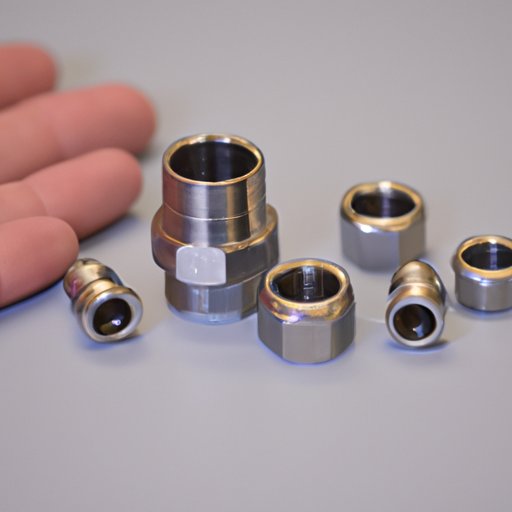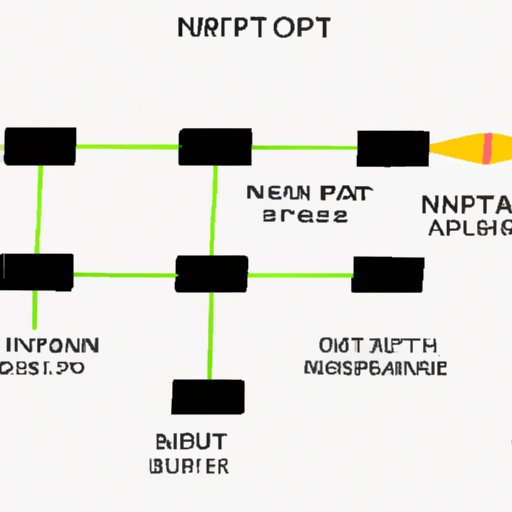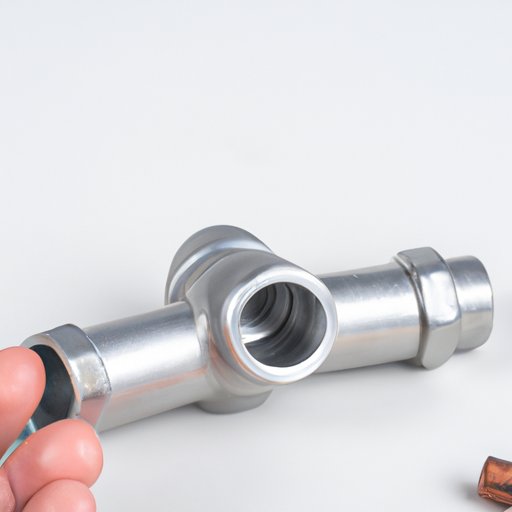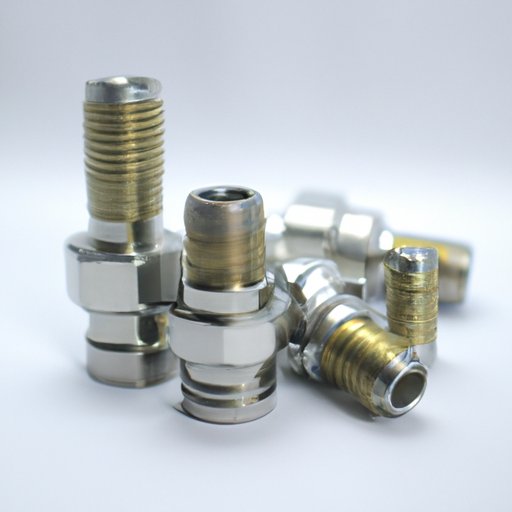Introduction
NPT fittings are a type of pipe fitting used in plumbing, industrial, and other applications. They have a variety of uses and are commonly used to connect pipes and other components together. In this article, we will explore what an NPT fitting is, its different types and uses, and the benefits of using them. We will also discuss the different thread types and connections that can be made with NPT fittings, and how to properly install them.

Exploring the Basics of NPT Fittings
NPT stands for “National Pipe Thread”, and it is a standard thread type used in the United States and Canada. It is a tapered thread, which means that it has a slightly larger diameter at the end than at the beginning. This helps to create a tight seal when two pieces are connected.
There are two main types of NPT fittings: male and female. Male NPT threaded fittings have threads on the outside of the pipe, while female NPT threaded fittings have threads on the inside of the pipe. Both types of fittings come in various sizes and shapes, so it is important to make sure you select the correct size and shape for your application.
An Overview of NPT Fittings and Their Uses
NPT fittings are used in many different applications, including plumbing, industrial, and automotive. They are often used to connect pipes and other components together. Some of the most common applications include water and gas lines, oil and fuel lines, hydraulic systems, and irrigation systems.
NPT fittings offer several advantages over other types of fittings. They are easy to install and maintain, they provide a secure connection, and they are cost-effective. Additionally, they are available in a wide range of sizes and shapes, so they are suitable for a variety of applications.
The Benefits of Using NPT Fittings
NPT fittings are strong and durable, making them ideal for use in high-pressure or extreme temperature applications. They are designed to withstand vibration and shock, and they do not corrode or rust easily. This makes them a great choice for outdoor applications or in areas where corrosion is a concern.
NPT fittings are also easy to install and maintain. They can be installed quickly and easily, and they do not require special tools or expertise. Additionally, they are relatively inexpensive, making them a cost-effective solution for most applications.

Understanding NPT Threads and Connections
NPT threads come in a variety of sizes and types. The most common sizes are 1/8″, 1/4″, 3/8″, 1/2″, 3/4″, 1″, and 2″. The thread type is determined by the pitch (distance between threads) and the angle of the thread. The most common thread types for NPT fittings are straight, tapered, round, and blunt.
When connecting two pieces with NPT fittings, it is important to ensure that the threads are properly sealed. This can be done with a variety of sealing methods, such as using Teflon tape or thread sealant. It is important to follow the manufacturer’s instructions when using any type of sealant.

How to Install NPT Fittings
Installing NPT fittings is relatively easy and straightforward. Before installing the fitting, the surface should be cleaned and prepped. This can be done with sandpaper or steel wool, depending on the material of the pipe or component. Once the surface is clean, the fitting can be inserted into the pipe or component and secured with a wrench.
It is important to ensure that the threads are properly aligned before tightening the fitting. If the threads are misaligned, the fitting may leak or break. Additionally, it is important to check for leaks after the fitting has been installed. If there is a leak, the fitting should be tightened or replaced.
Tips for Working with NPT Fittings
When working with NPT fittings, it is important to use the appropriate tools. A wrench should always be used to tighten the fitting, and never pliers or other tools. Additionally, it is important to make sure that the connection is properly secured. This can be done by using a locking nut or other device.
Finally, it is important to regularly check for leaks. Leaks can occur even if the fitting is properly installed, so it is important to check the connection periodically to ensure that it is secure and leak-free.
Conclusion
NPT fittings are a popular and versatile type of pipe fitting that can be used in many different applications. They are strong and durable, easy to install and maintain, and cost-effective. Additionally, they come in a variety of sizes and shapes, and they are available in both male and female styles. Understanding the basics of NPT fittings and how to properly install them is essential for any DIYer or professional plumber.
In conclusion, NPT fittings are a great choice for a variety of applications. They are strong, durable, and easy to install, and they provide a secure connection. With proper installation and maintenance, they can last for many years. So, whether you’re a DIYer or a professional plumber, understanding NPT fittings can help you get the job done right.
(Note: Is this article not meeting your expectations? Do you have knowledge or insights to share? Unlock new opportunities and expand your reach by joining our authors team. Click Registration to join us and share your expertise with our readers.)
